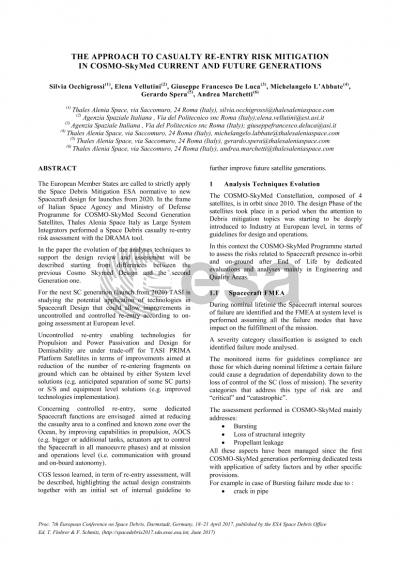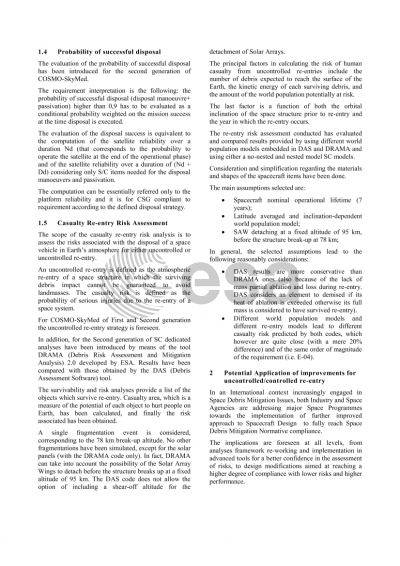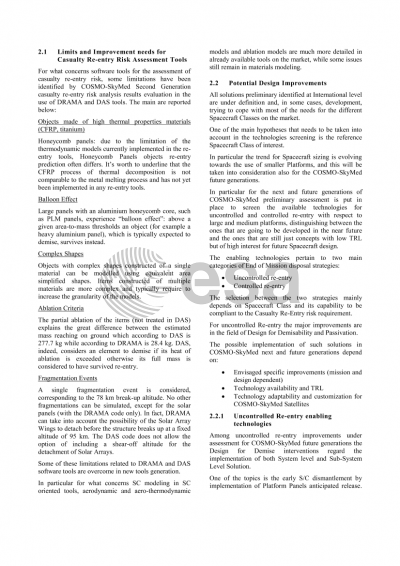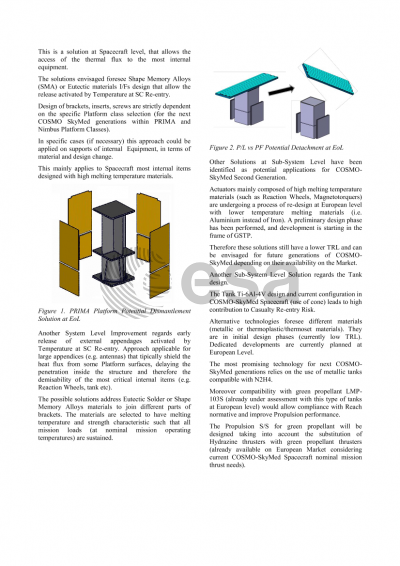Document details

Abstract
The European Member States are called to strictly apply the space debris mitigation ESA normative to new Spacecraft design for launches from 2020. In the frame of Italian Space Agency and Ministry of Defense Programme for COSMO-SkyMed Second Generation (CSG) Satellites, Thales Alenia Space Italy (TASI) as Large System Integrators performed a Space Debris casualty re-entry risk assessment with the DRAMA tool.
In the paper the evolution of the analyses techniques to support the design review and assessment will be described starting from differences between the previous Cosmo Skymed Design and the second Generation (CSG) one.
For the next S/C generation (launch from 2020) TASI is studying the potential application of technologies in Spacecraft Design that could allow improvements in uncontrolled and controlled re-entry according to on-going assessment at European level.
Uncontrolled re-entry enabling technologies for Propulsion and Power Passivation and Design for Demisability are under trade-off for TASI PRIMA Platform Satellites in terms of improvements aimed at reduction of the number of re-entering fragments on ground which can be obtained by either System level solutions (e.g. anticipated separation of some SC parts) or S/S and equipment level solutions (e.g. improved technologies implementation).
Concerning controlled re-entry, some dedicated Spacecraft functions are envisaged aimed at reducing the casualty area to a confined and known zone over the Ocean, by improving capabilities in propulsion, AOCS (e.g. bigger or additional tanks, actuators apt to control the Spacecraft in all manoeuvre phases) and at mission and operations level (i.e. communication with ground and on-board autonomy).
CGS lesson learned, in term of re-entry assessment, will be described, highlighting the actual design constraints together with an initial set of internal guideline to further improve future satellite generations.
Preview









